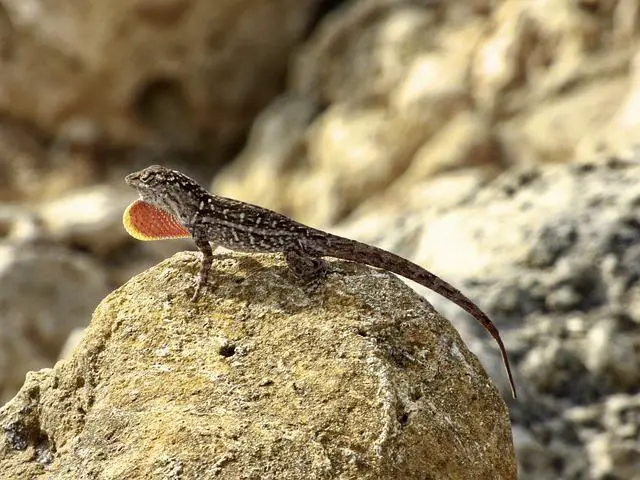When an anole changes colors, it can signify different things depending on the color. For example, when a green anole turns brown, it could mean that the Anole is stressed or sick. It’s essential to be aware of these color changes and what they mean so that you can adequately care for your pet anoles. This blog post will discuss what causes anoles to change colors and what each color change means.
What does it mean when a green anole is and turns brown?
These lizards are usually green, but they can also turn brown. The color change is generally due to temperature changes or stress.
For instance, if the temperature drops, the lizard will become browner in color.
This helps it to absorb heat better and stay warm. Similarly, if the lizard feels threatened, it may turn brown to blend in with its surroundings and avoid being seen by predators.
In most cases, the color change is temporary, and the lizard will return to its standard green color once the stressor is gone.
Changes in color in Anoles can be a sign of illness or stress.
When it comes to reptiles, one of the most common questions is whether or not color changes can signify illness or stress.
In the case of Anoles, the answer is yes.
While Anoles can change their color for various reasons, including temperature and mood, sudden and drastic changes can indicate health problems.
For example, if Anole’s usually green body turns brown or black, it could indicate liver disease.
If the animal’s skin becomes blotchy or peelings, it could be a sign of minutes or vitamin A deficiency.
As such, it’s essential to pay close attention to your pet’s coloration and seek veterinary care if you notice any changes.
Are there any other colors that Anoles change to and the reasons
In addition to the green and brown colors that Anoles typically change to camouflage themselves, they can also switch to a reddish hue.
The red coloration is usually only seen in males and is thought to play a role in courtship and territorial behavior.
When a male Anole is trying to attract a mate, he will often display his red coloring to impress her. In addition, when two males compete for territory, the one with the brightest red color will usually win the contest.
As a result, the ability to change color plays an essential role in the social life of these lizards.
Should I be concerned if my Green Anole changes color to brown
If you have a Green Anole as a pet, you may have noticed that it can change color from green to brown.
While this may concern some people, it is normal behavior for this type of lizard. The ability to change color is an Anole’s way of regulating its body temperature.
When the air temperature is warm, the Anole will absorb more heat, and its skin will turn brown. If the temperature cools down, the Anole will stop drinking heat, and its skin will turn green again.
So, if you see your Green Anole changing color, there is no need to be concerned. Just enjoy watching your pet adapt to its environment. Thanks for reading.




